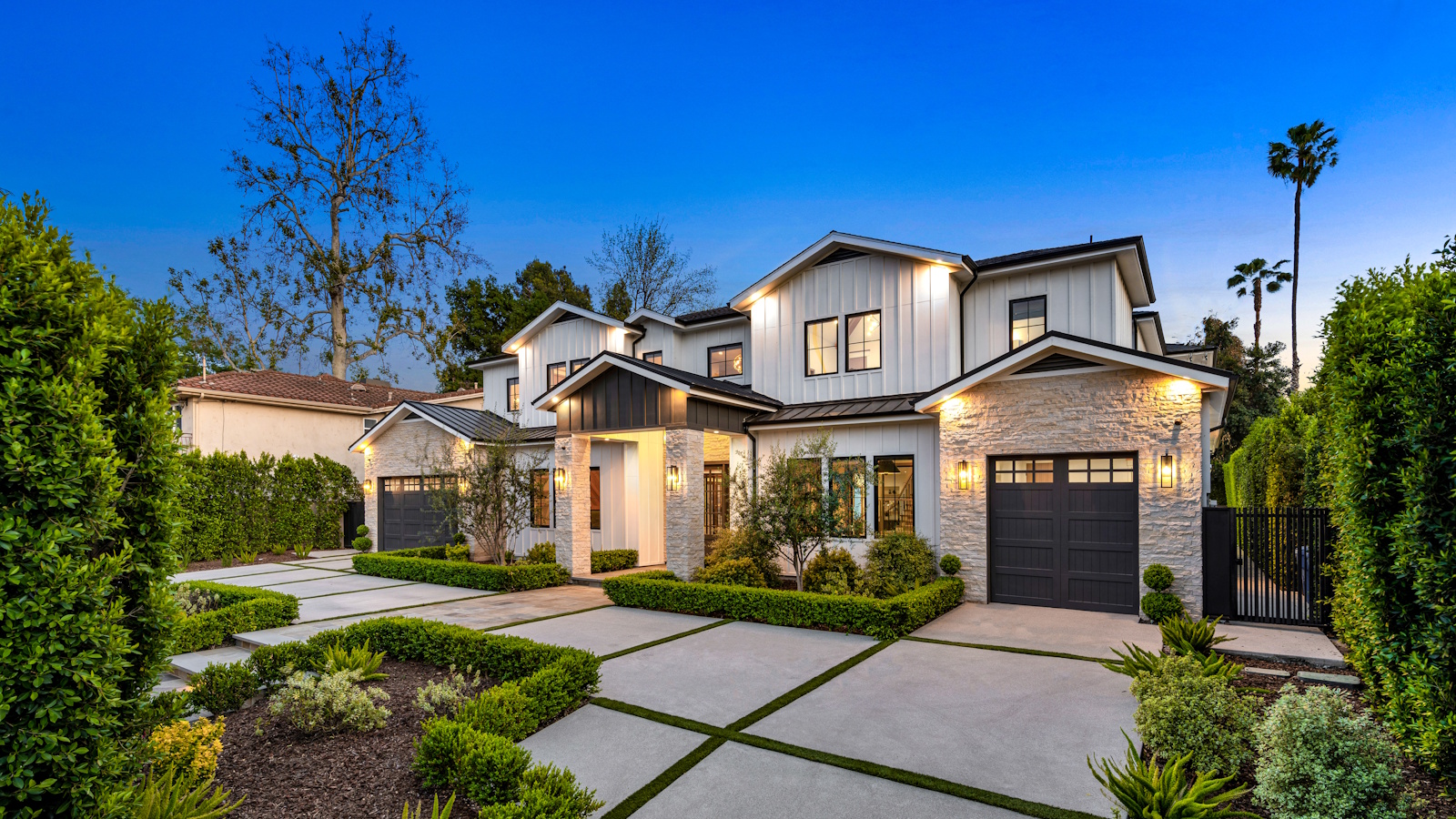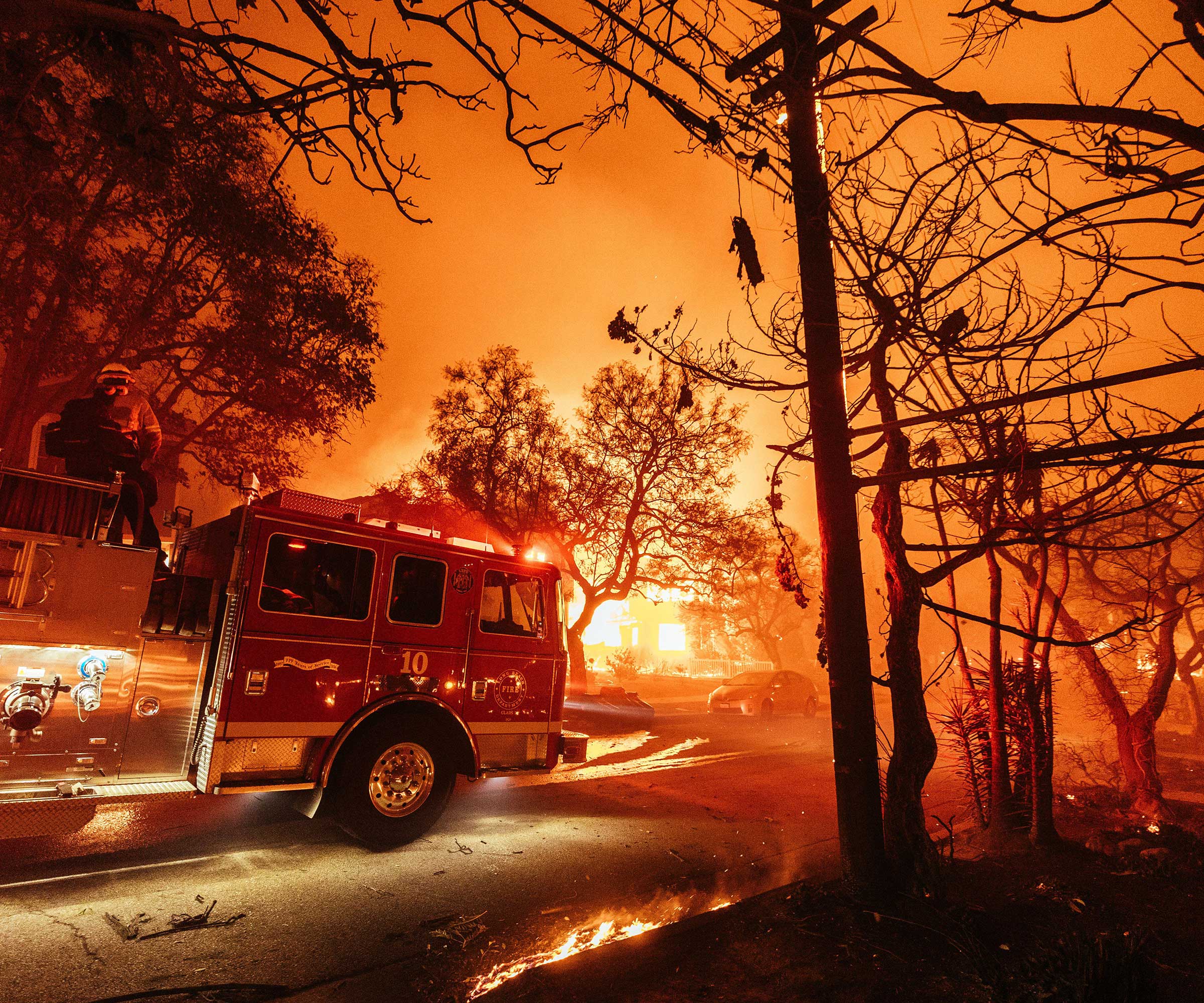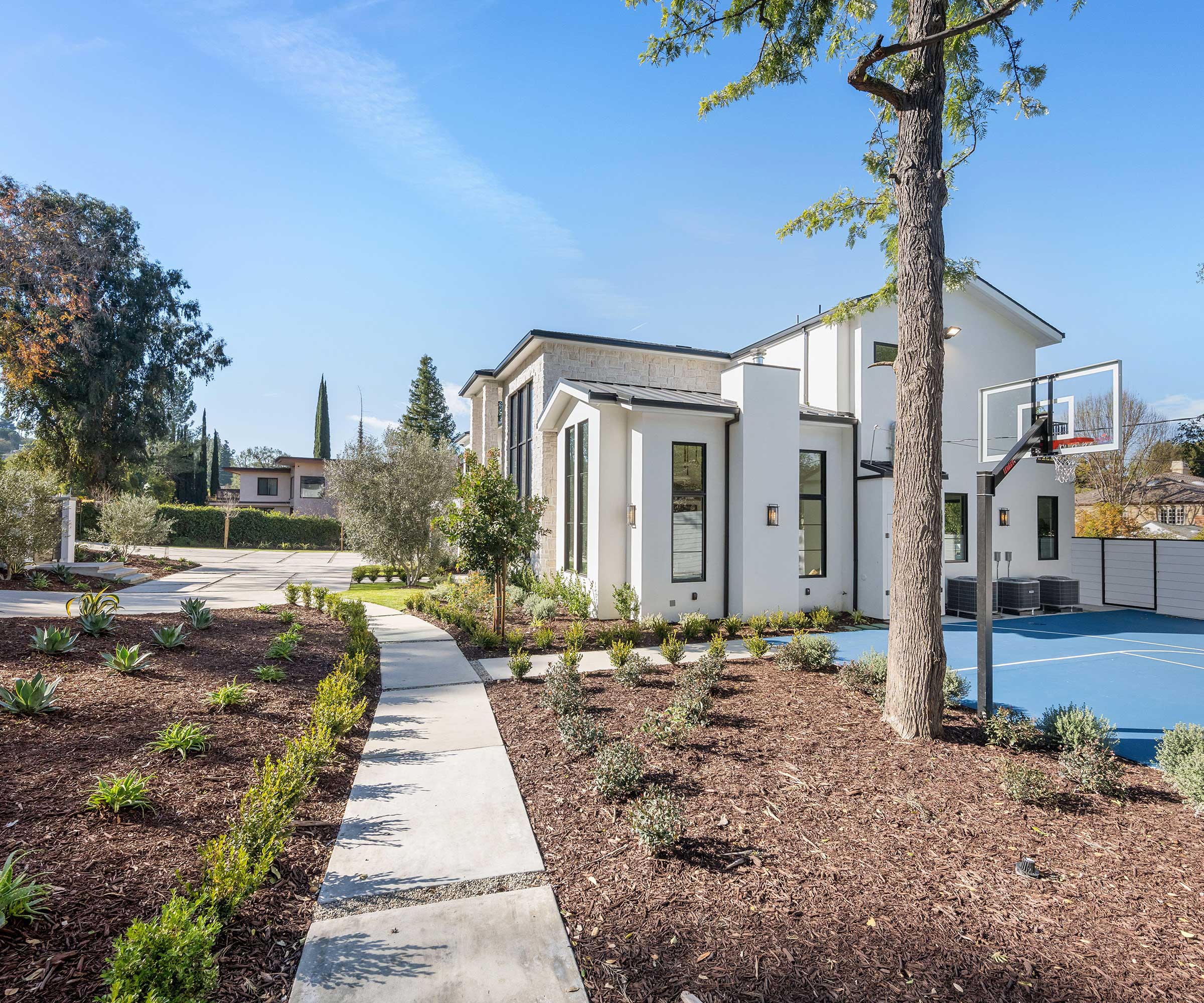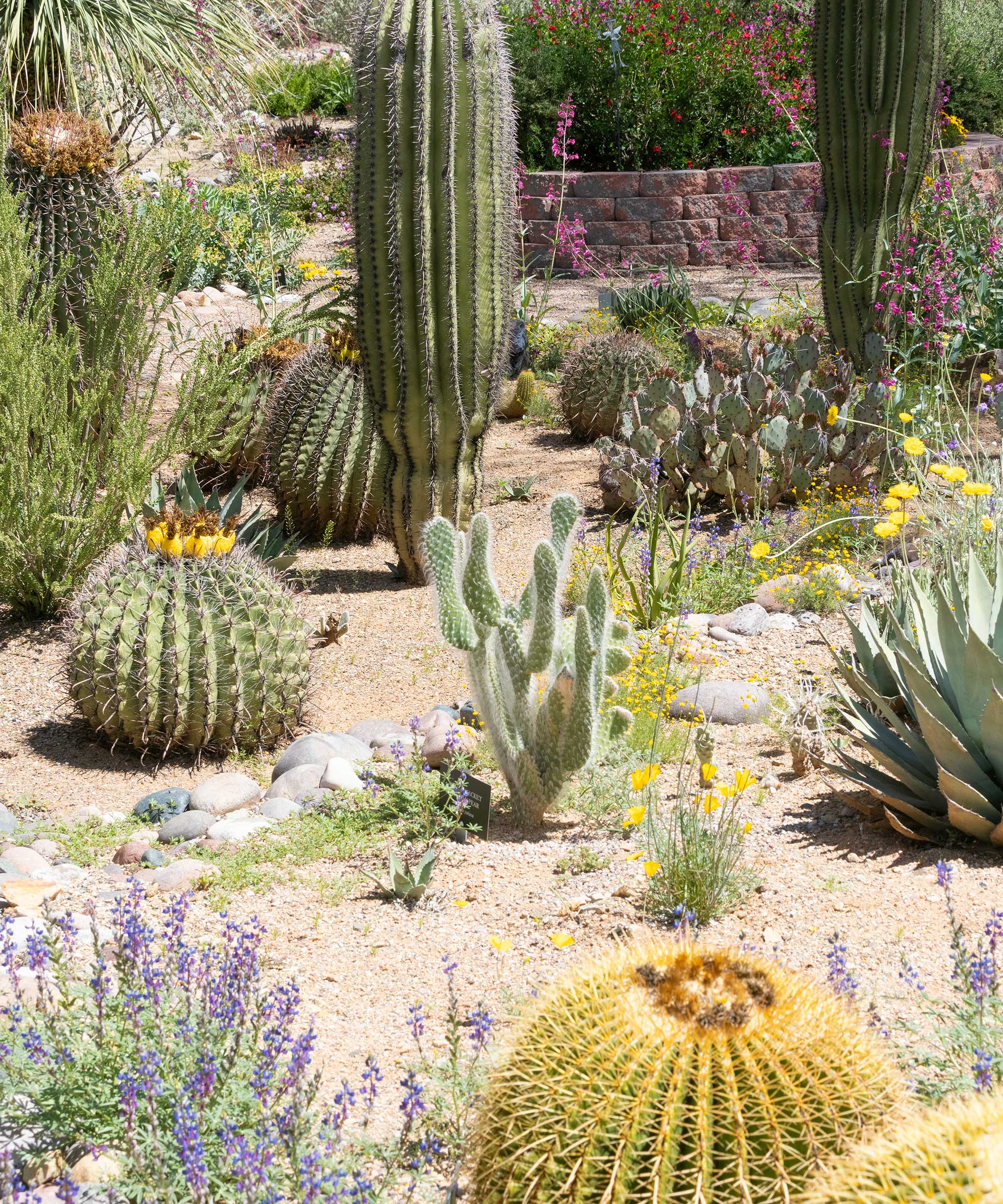Zone 0 wildfire regulations will force landscape designers to 'pioneer a new California aesthetic', say experts. Here's what to expect from the rules
In response to devastating wildfires, new backyard safety regulations are due to be finalized this year


Back in January, wildfires spread across the Los Angeles area in California. The effects were devastating and extensive – thousands of homes and structures were destroyed and many lives were tragically lost. In response, formal regulations are being developed by the Board of Forestry and Fire Protection, which will address ember-resistant defensible zones in yards, also known as Zone 0. These rules are expected to be finalized by the end of 2025.
Zone 0 refers to an area measuring five feet outwards from the perimeter of the home (including from any attached wooden deck). To help prevent wildfires from spreading and igniting buildings, impending rules are expected to prohibit flammable items within these spaces in certain areas of the state.
To comply with this type of firescaping, many California residents will need to rethink backyard layouts and design over the upcoming months and years, as will landscape designers and property developers. I turned to experts in the field, including California-based landscape designers, for further insights.
What are the key Zone 0 regulations?

The Palisades Fire, in January 2025, spread over 20,000 acres
Items that will no longer be permitted within Zone 0 will range from in-ground plants, dead or dying plant matter, and types of organic mulch (wood chips), to other flammable backyard features such as trellises and sheds.
Combustible fencing and gates that attach to the home are likely to be a no-go.
Some potted plants may be allowed in Zone 0 (up to a certain amount), but factors such as the material, size, upkeep, moveability, and exact location of containers will determine what can stay.
With this in mind, it may be easier to keep the area clear of container gardening altogether for backyards that need to comply.
Design expertise in your inbox – from inspiring decorating ideas and beautiful celebrity homes to practical gardening advice and shopping round-ups.
Tall, established trees may be allowed within Zone 0 in the finalized regulations; however, as with potted plants, certain stipulations are expected.
These are predicted to specify how far branches can be from houses, and also the need to remove any dead or dying branches, meaning diligent pruning will be in order. Similarly to the regulations about mulch, fallen leaves may also need to be cleared from the area.
How will landscaping change to meet the new regulations?

Many homeowners will need to rethink their backyard layouts to comply with new Zone 0 rules
‘The new Zone 0 regulations will push Californians to think differently about how we design the space right next to our homes,’ says Harry Statter, founder and CEO at Frontline Wildfire Defense.
‘Historically, this area has been treated like a backdrop to decorate with shrubs, mulch, and fencing. But dry vegetation, wood mulch, and flammable materials close to the home can easily ignite from windblown embers – and those embers are the leading cause of home loss in wildfires.
'We now know, both from research and from first-hand experience during major fires, that this five-foot perimeter is one of the most ignition-prone zones on a property.
‘Zone 0 reframes that immediate space around the home not just as landscaping, but as a critical part of a home’s defense system. That calls for a new design mindset: from purely decorative to purposeful and protective,’ Harry continues.
‘The regulations will influence everything from what materials we use to how we space and maintain vegetation. That’s an exciting opportunity for designers to pioneer a new California aesthetic. And over time, this shift won’t just change individual properties, it will shape whole communities to be more resilient in the face of fire.’

Harry is a wildfire ecologist and technologist, and has been at the forefront of wildfire mitigation efforts for more than two decades. He is also the founder of Frontline Wildfire Defense, which provides digitally-connected exterior sprinkler systems to protect homes and businesses from wildfires, as well as a free mobile app with live wildfire tracking and evacuation notifications.

Xeriscaping, which uses rocks and gravel, can complement a Zone 0 compliant yard – although the plants themselves will likely need to be kept outside of the five-foot area
Sacha McCrae, founder of California-based Living Gardens Landscape Design, says that they educate their clients in high fire severity zones about the new Zone 0 regulations and how changes (such as the absence of planting within the area) will impact design decisions.
They also share the local CalFire website link with them, and explain that non-combustible materials will take the lead in creating beautiful, resilient spaces. This can mean designing fencing and patio covers that are constructed from metal rather than wood – ‘aluminum and steel are great options, although rather more costly.’
Dotan Trabulsi, a California B-licensed general contractor and owner of Optimal Home Remodeling & Design in San Diego, highlights the concept of a ‘hardscape halo’, whereby wooden fences, mulch, and decks are swapped for gravel, decomposed granite, pavers, or stone.
‘I frame the 5-ft “moat” with sweeping stone ribbons or contrasting plant massings so the safety zone reads intentional, not barren,’ he adds.
On the topic of plants, Laura Osteen, landscape designer and licensed landscape contractor of Secret Garden Landscapes, says that designers should be considering how planting is layered away from the house.
‘For example, in a front yard, the area right next to the house is not really that important as people see what is layered in front instead,’ she says. She also notes how keeping plants properly maintained and healthy is an important element of firescaping.
Harry underlines this point: ‘Even the best-planned landscapes can become hazards if they’re not maintained. Leaves pile up, branches die back, and weeds creep in. That’s why good Zone 0 design makes upkeep part of the plan.’
Top tip: Harry points out how xeriscaping aligns naturally with fire-smart design, noting how it relies on materials such as stone to create low-maintenance spaces that hold up through drought and fire alike. ‘Xeriscaping also emphasizes drought-tolerant plants and reduced lawn areas, which means less water, less upkeep, and fewer fast-burning fuels,’ he adds.

Sacha McCrae is the founder and designer at Living Gardens Landscape Design, a boutique Orange County, California, garden design company. Living Gardens creates welcoming outdoor rooms that are beautiful and functional, incorporating natural materials and lush, drought-tolerant plant palettes.

Laura Osteen is an award-winning landscape designer and licensed landscape contractor who grew up in the San Francisco East Bay, where she developed a lifelong connection to the natural world. With decades of experience and a multidisciplinary background, she leads Secret Garden Landscapes in creating sustainable, beautiful, and functional outdoor spaces tailored to each client’s lifestyle and the unique rhythms of California’s Mediterranean climate.
FAQs
Which areas will need to comply with the new Zone 0 regulations?
It’s expected that structures within the State Responsibility Area and the Very High Fire Hazard Severity Zone in Local Responsibility Areas will be obliged to comply with the new regulations. If you’re unsure, you can check with your local fire department to see if the changes will affect you. While the rules are expected to apply to new constructions immediately once finalized, a grace period of three years is expected to be given for existing structures to make any necessary changes.
What plants are better suited to high fire risk areas?
For areas at risk of fire, it’s worth considering fire-resistant planting choices for the areas beyond Zone 0. ‘There’s no such thing as a fireproof plant but some are far more dangerous than others,’ says Harry.
‘Dense, oily, resinous, or fast-drying species (like juniper, Italian cypress, or feather grass) are common around homes, but they burn quickly and intensely.’ Instead, he recommends choosing low-growing, open-structured plants that hold moisture well and contain less fire fuel. ‘Native species like manzanita, ceanothus [you can find a range at Nature Hills], and certain oaks provide beauty, habitat, and resilience.
‘What matters most isn’t just the species, but how and where plants are placed,’ he continues. ‘Avoid clustering flammable plants near structures or each other. Leave enough space to maintain and irrigate each grouping. The goal is not to eliminate plants – but to design with fire behavior in mind, using native ecology as a guide.’
'Zone 0 isn’t a standalone solution,' says Harry. 'It works best as one layer in a comprehensive wildfire defense system. That includes home hardening upgrades like ember-resistant vents and non-combustible roofs, and active protection like Frontline’s exterior wildfire sprinklers. When these layers work together, they buy time. They slow the fire, reduce ember ignitions, and increase the odds that a home survives.
‘This shift isn’t just about compliance,’ Harry adds. ‘It’s about giving homeowners more confidence and more peace of mind, in the face of nature's wildfire processes.’
As well as fire safety in your backyard, don’t forget about the inside of your home, too. Our guide on common fire risks lists eight things to look out for.

Holly started writing about gardening five years ago, and she is a regular contributor to Homes & Gardens. She has also written many gardening features for Woman & Home and Real Homes, too. She has previous experience as a professional gardener, where she helped to plant and maintain private gardens. Holly has also looked after allotment plots over the years and loves to grow her own flowers and veggies from seed. In her spare time, she enjoys visiting local gardens, botanical drawing, and tending to her ever-growing collection of houseplants.